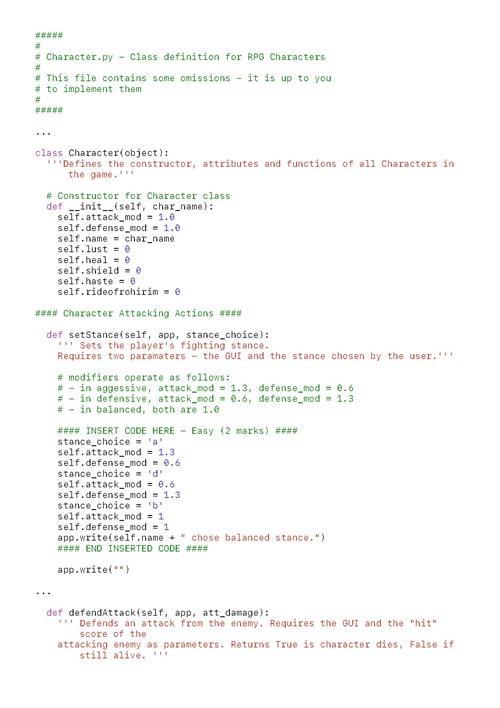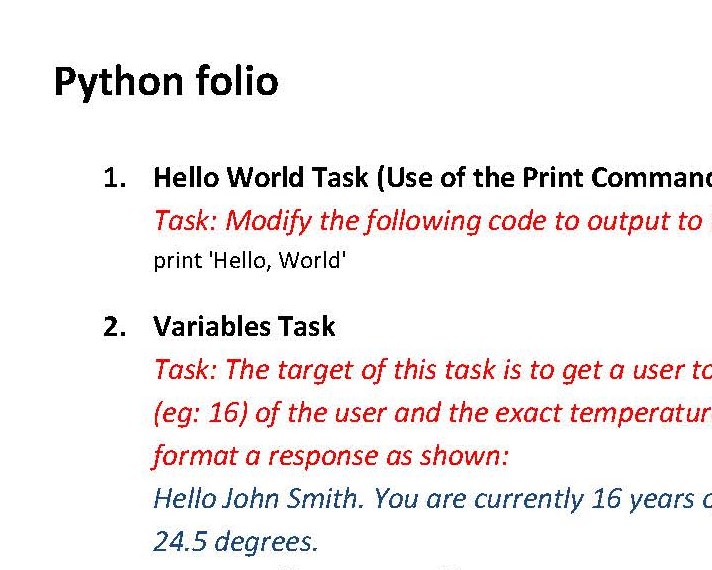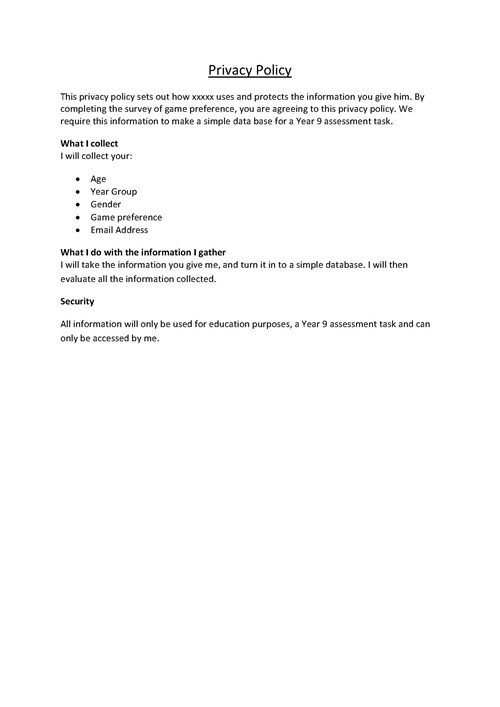- Home
- Resources
- Work samples
- Samples
- Digital project: Python game - AT
Digital Technologies
Years 9 and 10
Satisfactory
Digital project: Python game
Summary of task
Students were provided with a game that had been developed by previous students at the school using Python. They were required to correct any errors and to modify the game by creating additional features and functionality, for example new character races, new difficulty levels or game modes. Students deconstructed components of the game where needed to improve their understanding of the programming.
Achievement standard
By the end of Year 10, students explain the control and management of networked digital systems and the security implications of the interaction between hardware, software and users. They explain simple data compression, and why content data are separated from presentation. Students plan and manage digital projects using an iterative approach. They define and decompose complex problems in terms of functional and non-functional requirements.
Students design and evaluate user experiences and algorithms. They design and implement modular programs, including an object-oriented program, using algorithms and data structures involving modular functions that reflect the relationships of real-world data and data entities. They take account of privacy and security requirements when selecting and validating data. Students test and predict results and implement digital solutions. They evaluate information systems and their solutions in terms of risk, sustainability and potential for innovation and enterprise. They share and collaborate online, establishing protocols for the use, transmission and maintenance of data and projects.
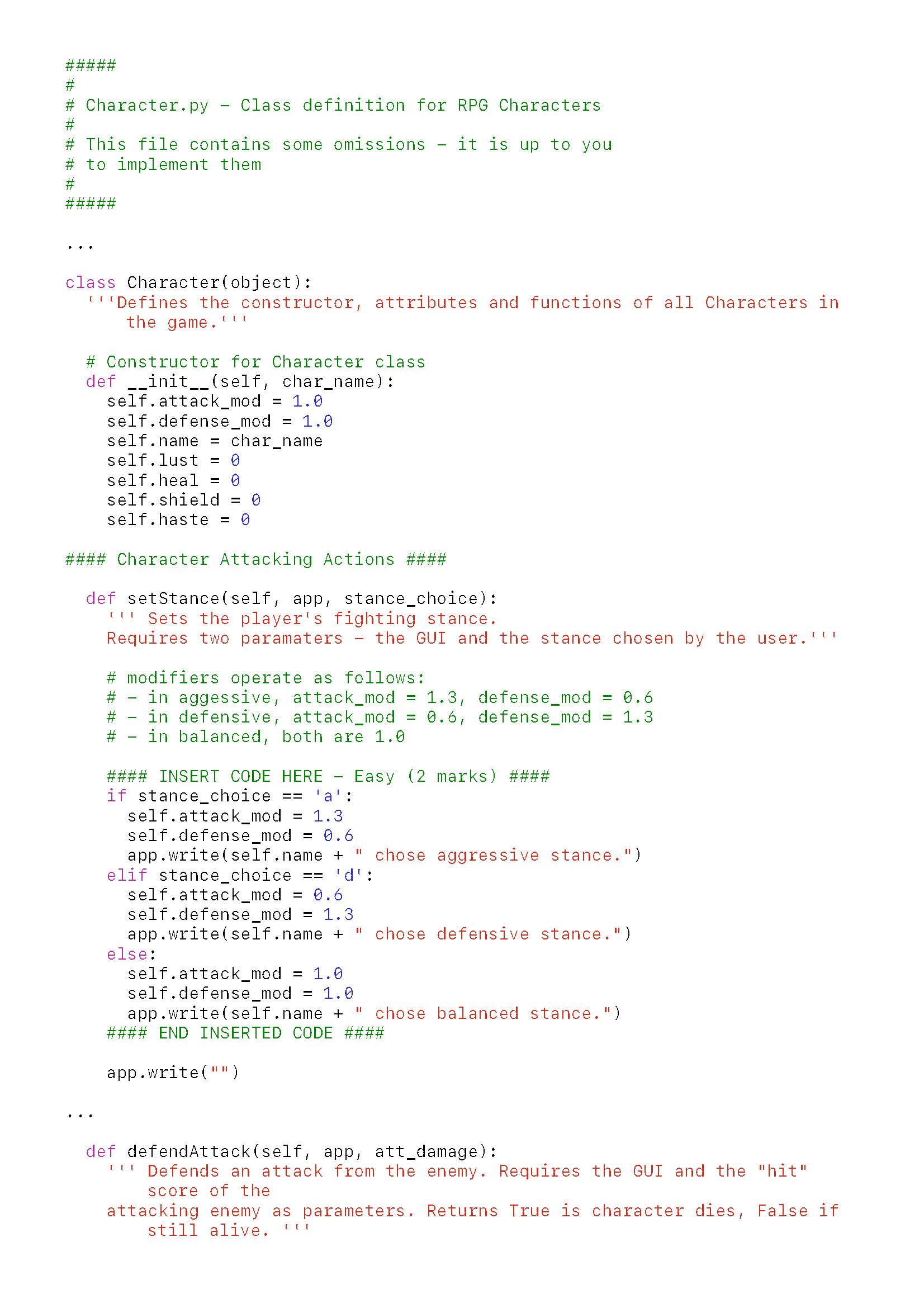 1
Annotation 1
1
Annotation 1
Demonstrates understanding of the functional requirements by assigning correctly the appropriate modifiers (a requirement of the task) to the options, including the use of a default case (else), in the provided function
-
Annotations
-
1
Annotation 1
Demonstrates understanding of the functional requirements by assigning correctly the appropriate modifiers (a requirement of the task) to the options, including the use of a default case (else), in the provided function
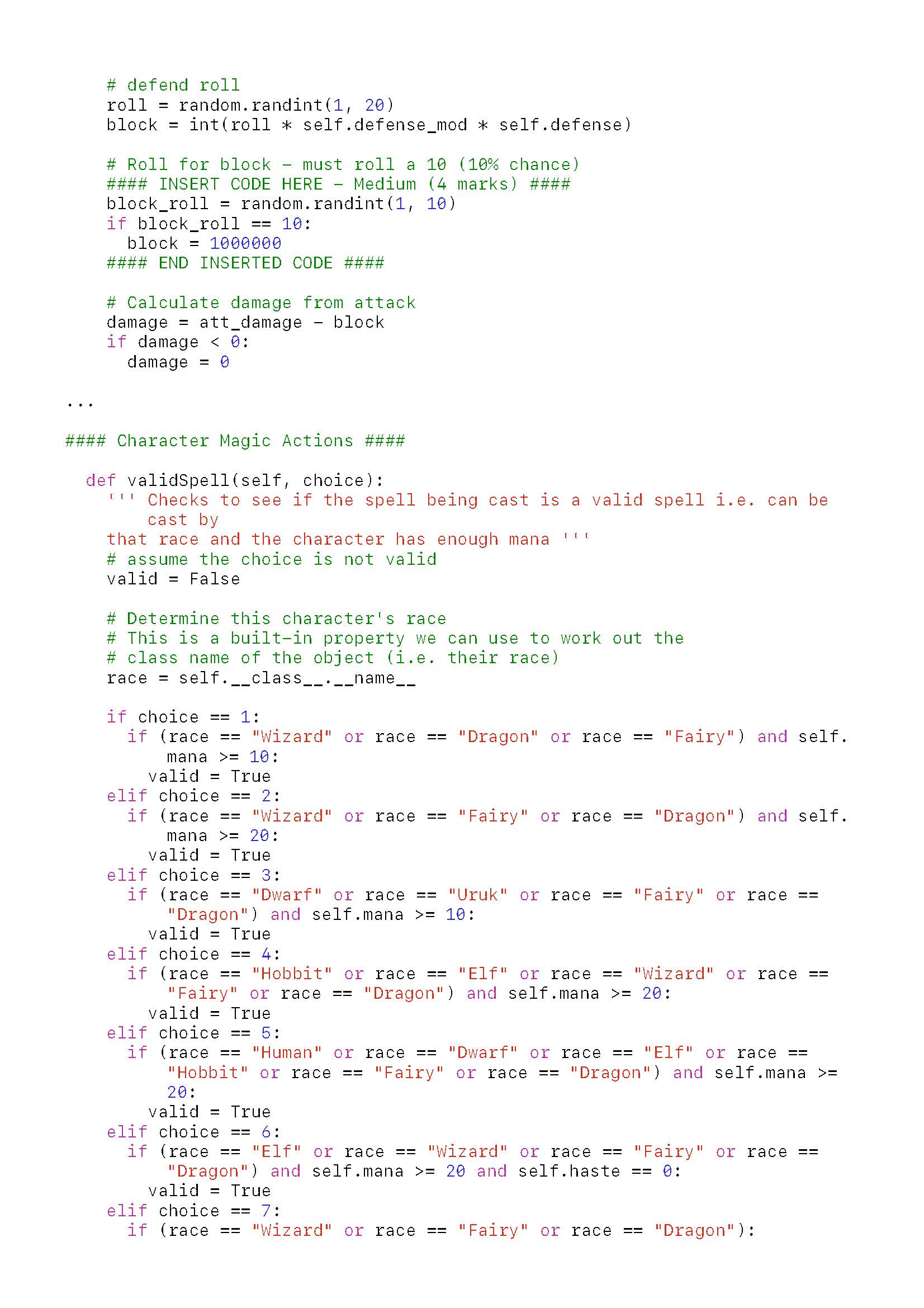 1
Annotation 1
1
Annotation 1
Demonstrates understanding of program by using a similar approach to that shown for attacking (critical hit) to determine the success of the block based on chance, using random module 2 Annotation 2
Modifies an object-oriented program by adding custom character races (Dragon and Fairy) to spell validity check function
-
Annotations
-
1
Annotation 1
Demonstrates understanding of program by using a similar approach to that shown for attacking (critical hit) to determine the success of the block based on chance, using random module -
2
Annotation 2
Modifies an object-oriented program by adding custom character races (Dragon and Fairy) to spell validity check function
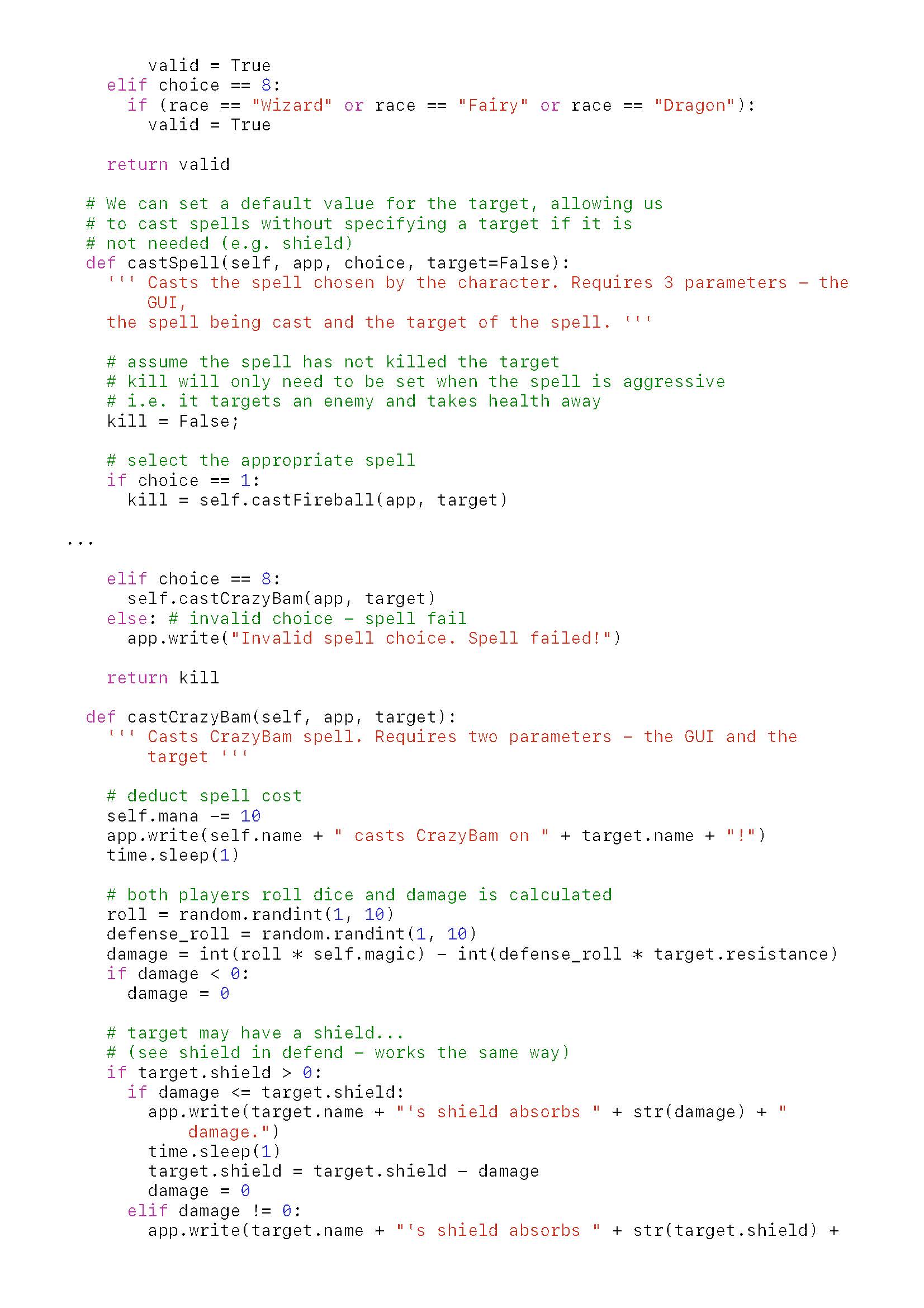 1
Annotation 1
1
Annotation 1
Modifies an object-oriented program by adding a new spell to the validity check 2 Annotation 2
Modifies an object-oriented program by adding a new spell that targets the enemy using the same function structure as other spells
-
Annotations
-
1
Annotation 1
Modifies an object-oriented program by adding a new spell to the validity check -
2
Annotation 2
Modifies an object-oriented program by adding a new spell that targets the enemy using the same function structure as other spells
 1
Annotation 1
1
Annotation 1
Demonstrates understanding of program by implementing shield mechanic as required by adjusting values in the variables
-
Annotations
-
1
Annotation 1
Demonstrates understanding of program by implementing shield mechanic as required by adjusting values in the variables
 1
Annotation 1
1
Annotation 1
Generates appropriate output for the user to understand the result of the interaction in the game 2 Annotation 2
Displays only those attributes relevant using IF statements 3 Annotation 3
Adapts the program by adding new character races (Dragon and Fairy) that inherit from the base class Character, by copying existing Wizard class with minor variations
-
Annotations
-
1
Annotation 1
Generates appropriate output for the user to understand the result of the interaction in the game -
2
Annotation 2
Displays only those attributes relevant using IF statements -
3
Annotation 3
Adapts the program by adding new character races (Dragon and Fairy) that inherit from the base class Character, by copying existing Wizard class with minor variations
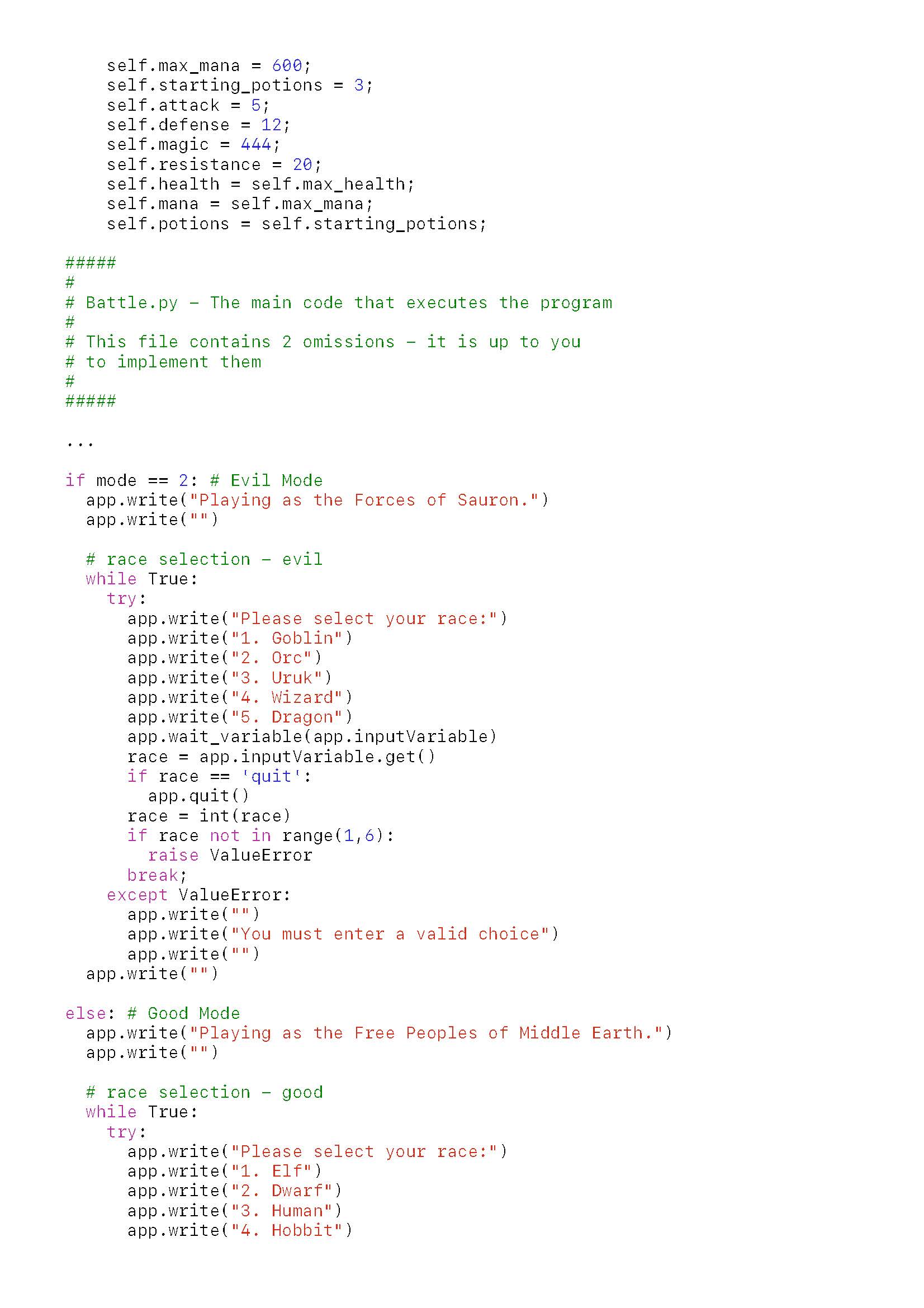 1
Annotation 1
1
Annotation 1
Enhances user experience by adding Dragon and Fairy options to menus for user input by editing existing loops
-
Annotations
-
1
Annotation 1
Enhances user experience by adding Dragon and Fairy options to menus for user input by editing existing loops
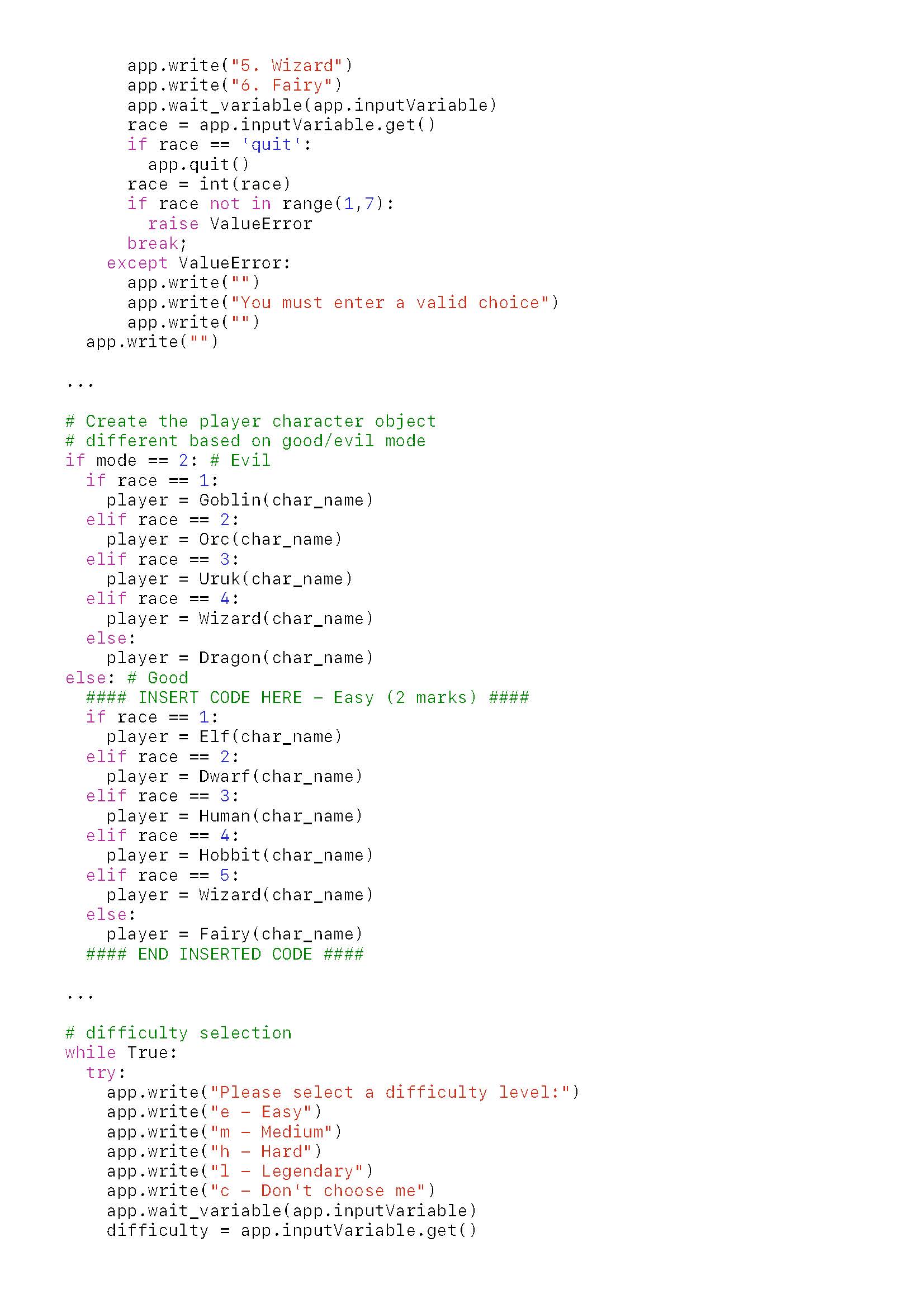 1
Annotation 1
1
Annotation 1
Instantiates objects based on user input for the ‘Good’ team based on the structure provided for the ‘Evil’ team 2 Annotation 2
Modifies an object-oriented program by adding new difficulty level to menu and performs appropriate check for validity in exception handling
-
Annotations
-
1
Annotation 1
Instantiates objects based on user input for the ‘Good’ team based on the structure provided for the ‘Evil’ team -
2
Annotation 2
Modifies an object-oriented program by adding new difficulty level to menu and performs appropriate check for validity in exception handling
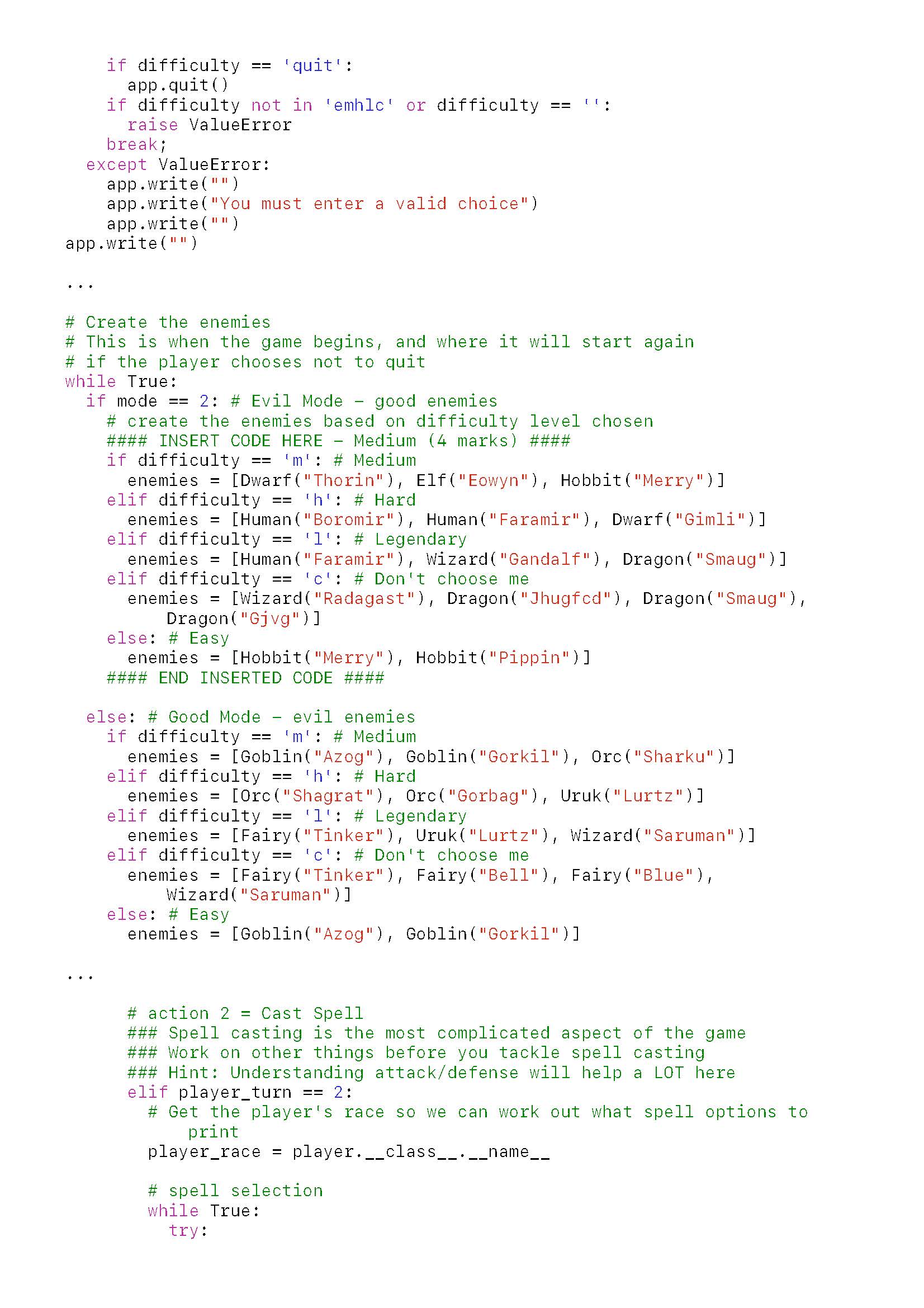 1
Annotation 1
1
Annotation 1
Creates enemies (instantiates objects) as appropriate for each side/difficulty level based on user input
-
Annotations
-
1
Annotation 1
Creates enemies (instantiates objects) as appropriate for each side/difficulty level based on user input
 1
Annotation 1
1
Annotation 1
Applies understanding of object-oriented program by adding appropriate options for spells for the Dragon and Fairy by coding them into the conditional statements as shown with other options 2 Annotation 2
Demonstrates that the game satisfies a requirement by ensuring the new spell has a target (as required for aggressive spells) by adding it to the conditions being checked
-
Annotations
-
1
Annotation 1
Applies understanding of object-oriented program by adding appropriate options for spells for the Dragon and Fairy by coding them into the conditional statements as shown with other options -
2
Annotation 2
Demonstrates that the game satisfies a requirement by ensuring the new spell has a target (as required for aggressive spells) by adding it to the conditions being checked
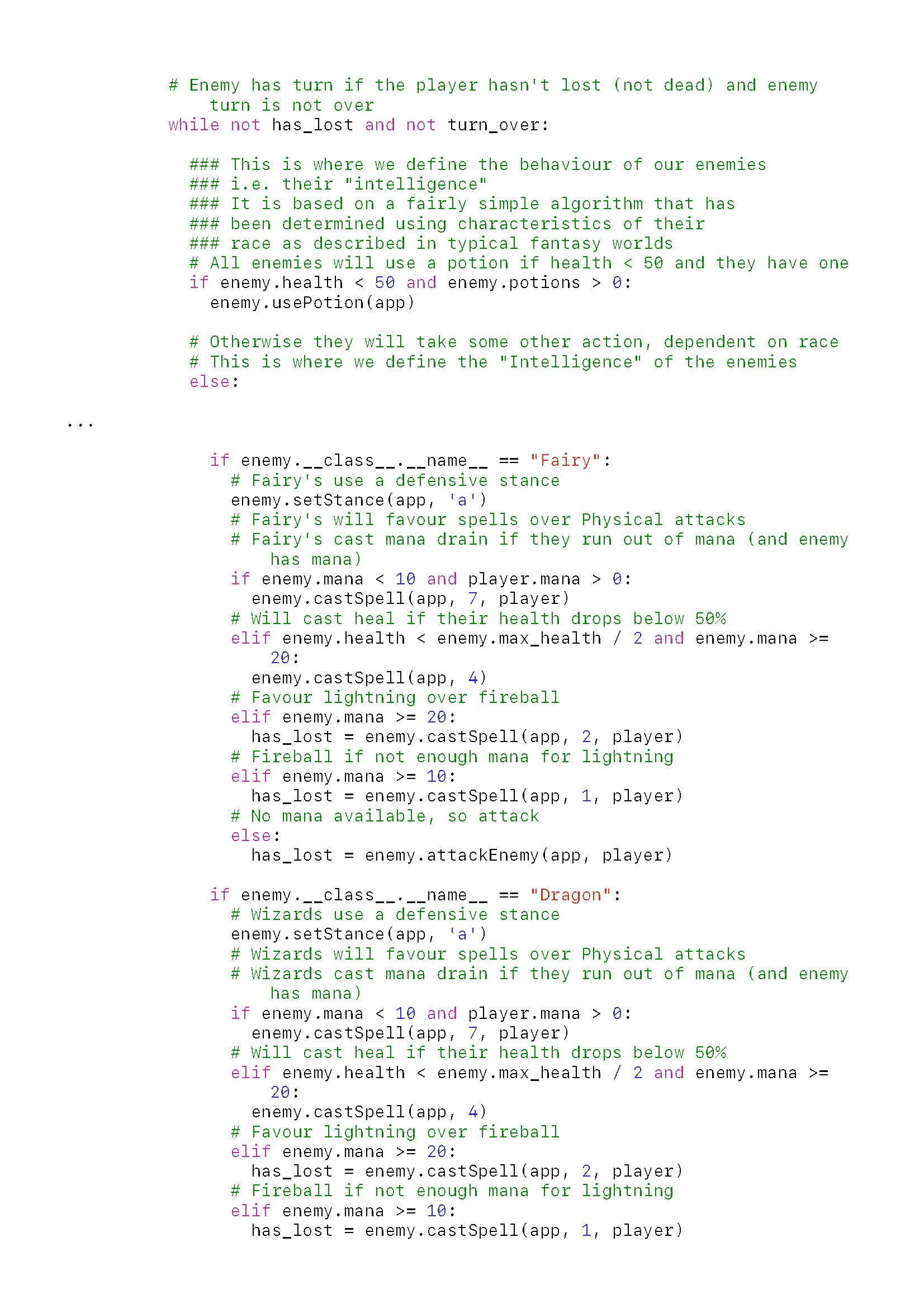 1
Annotation 1
1
Annotation 1
Creates artificial intelligence (AI) for the Dragon and Fairy classes that follow the same algorithm as that used for the Wizard
-
Annotations
-
1
Annotation 1
Creates artificial intelligence (AI) for the Dragon and Fairy classes that follow the same algorithm as that used for the Wizard
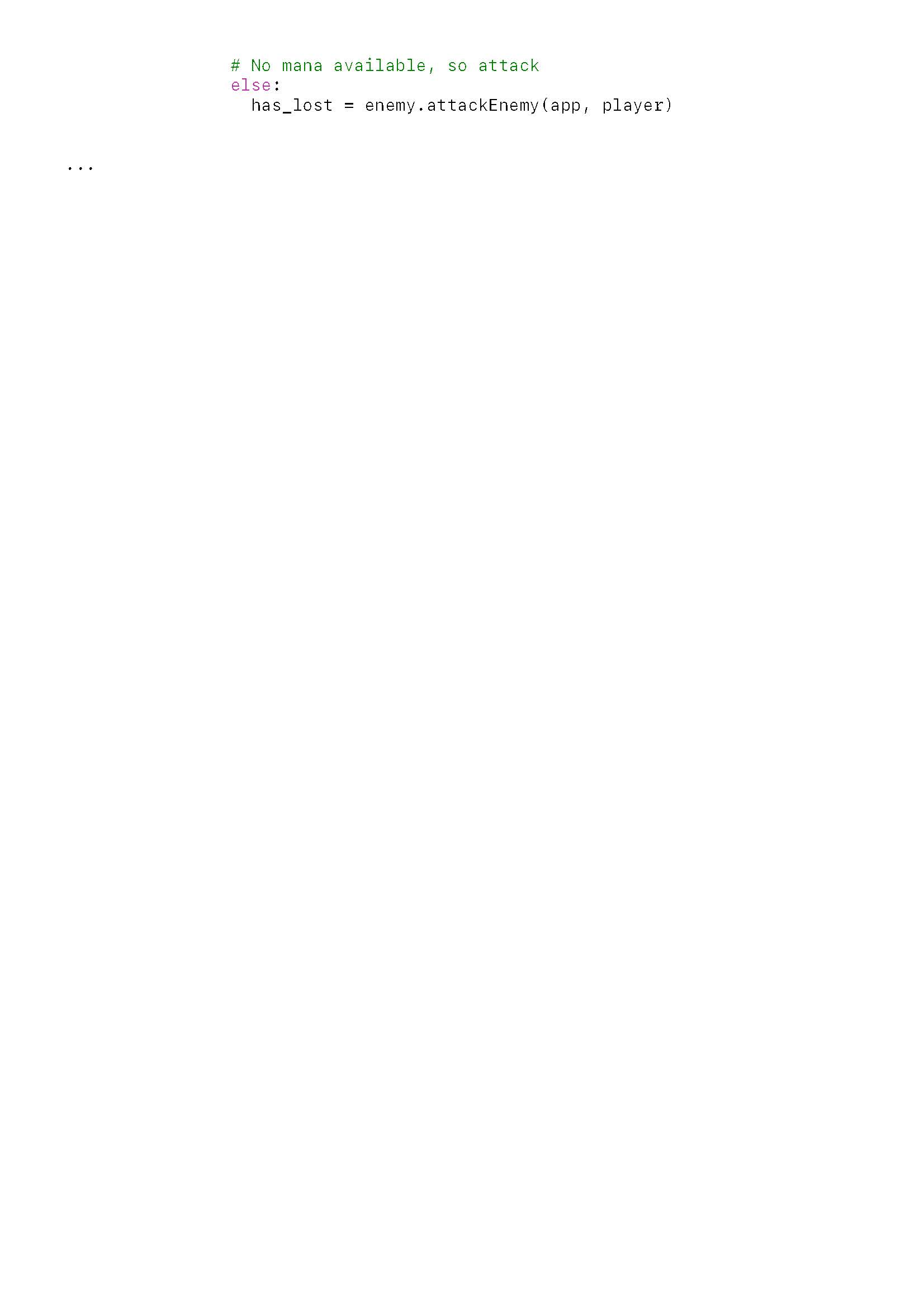
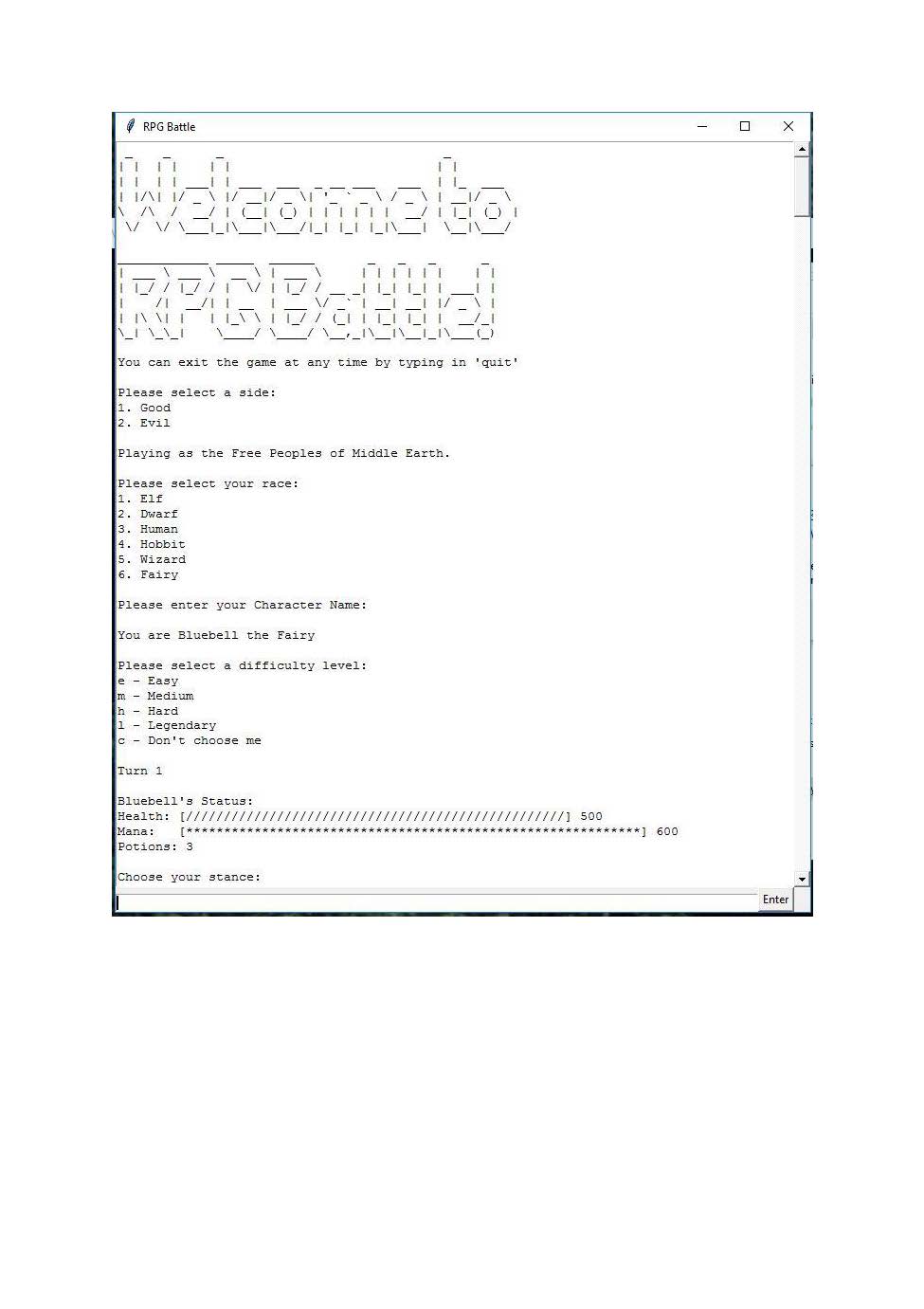 1
Annotation 1
1
Annotation 1
Modifies an object-oriented program by providing new races (Dragon and Fairy) and difficulties through the menus and changes to the game parameters 2 Annotation 2
Designs aspects of the user experience by providing a visual representation of the player's status
-
Annotations
-
1
Annotation 1
Modifies an object-oriented program by providing new races (Dragon and Fairy) and difficulties through the menus and changes to the game parameters -
2
Annotation 2
Designs aspects of the user experience by providing a visual representation of the player's status
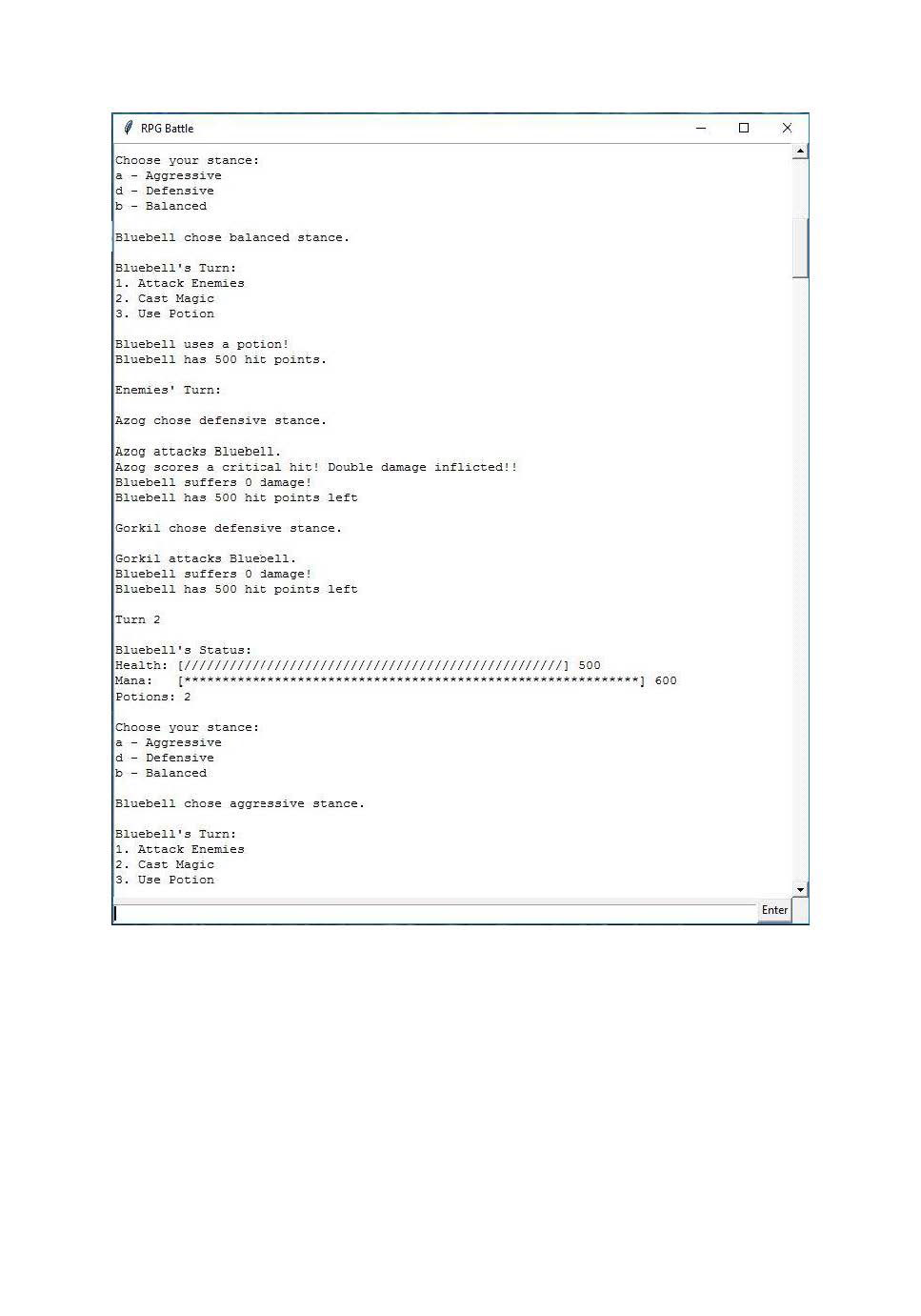 1
Annotation 1
1
Annotation 1
Provides a visual representation to indicate the player's status has updated based on previous actions
-
Annotations
-
1
Annotation 1
Provides a visual representation to indicate the player's status has updated based on previous actions
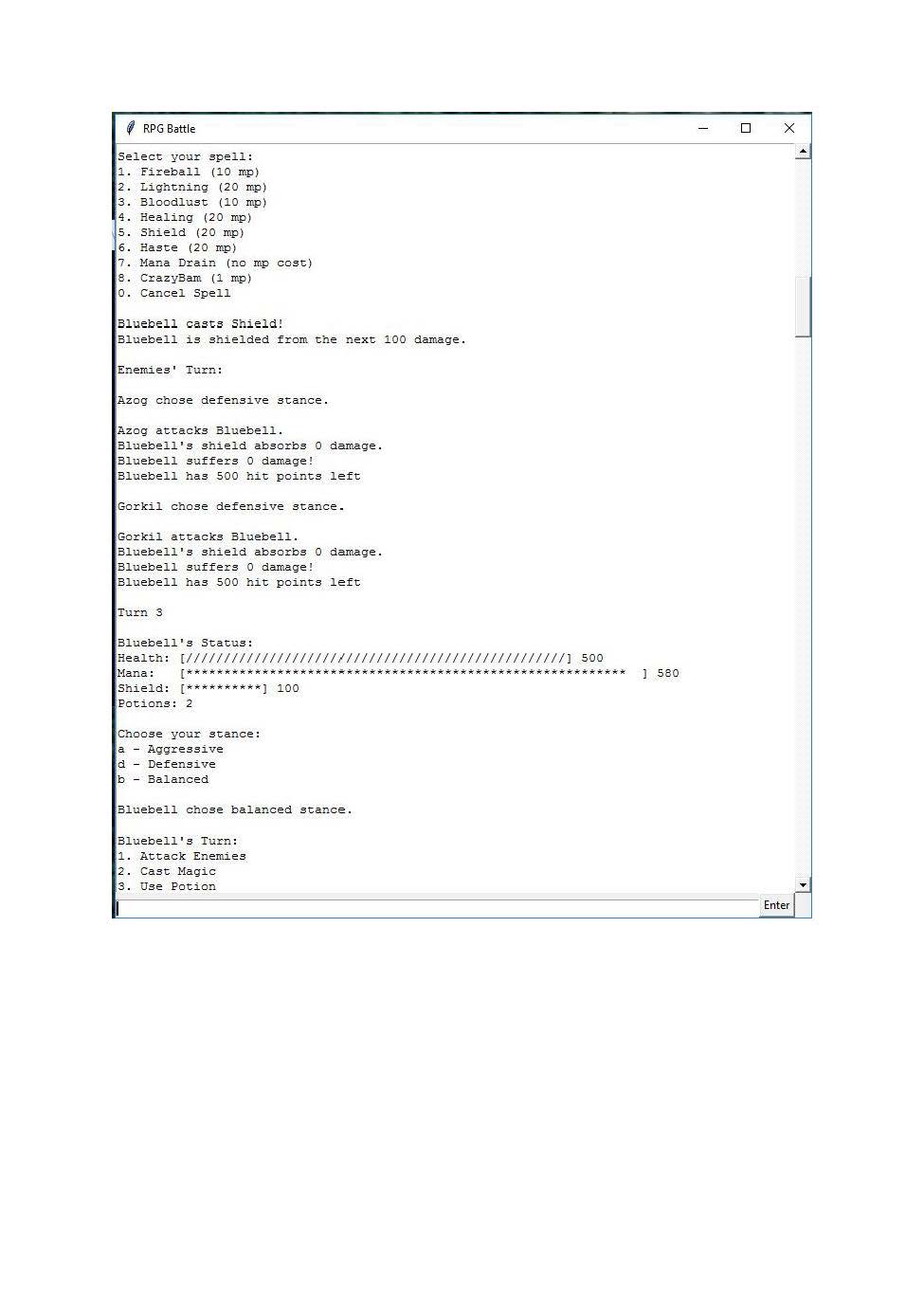 1
Annotation 1
1
Annotation 1
Designs an appropriate user experience by creating a menu that is context-sensitive and updates as required
-
Annotations
-
1
Annotation 1
Designs an appropriate user experience by creating a menu that is context-sensitive and updates as required
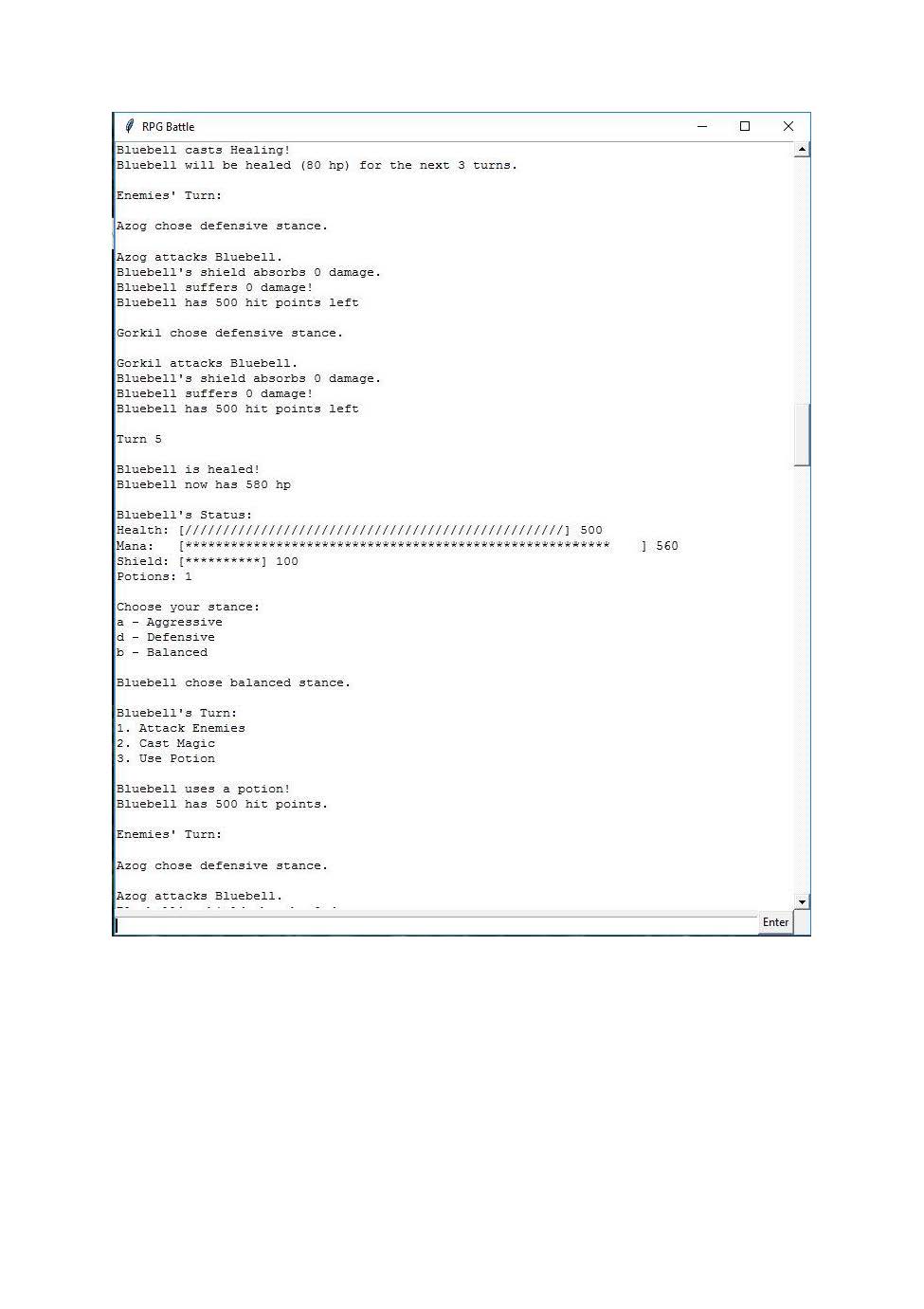
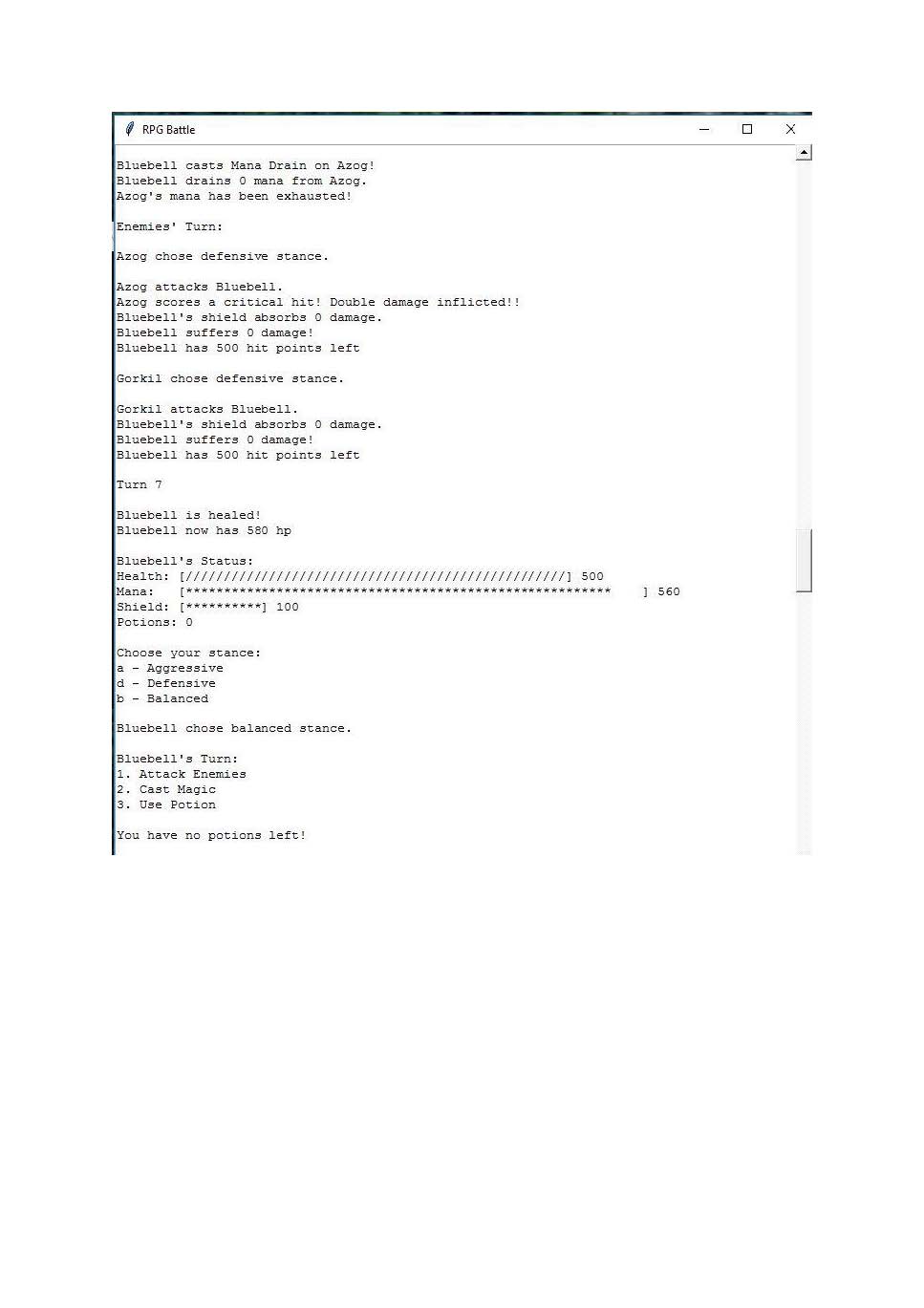 1
Annotation 1
1
Annotation 1
Demonstrates that the game satisfies functional requirements (attempts to use potions below zero are unsuccessful)
-
Annotations
-
1
Annotation 1
Demonstrates that the game satisfies functional requirements (attempts to use potions below zero are unsuccessful)
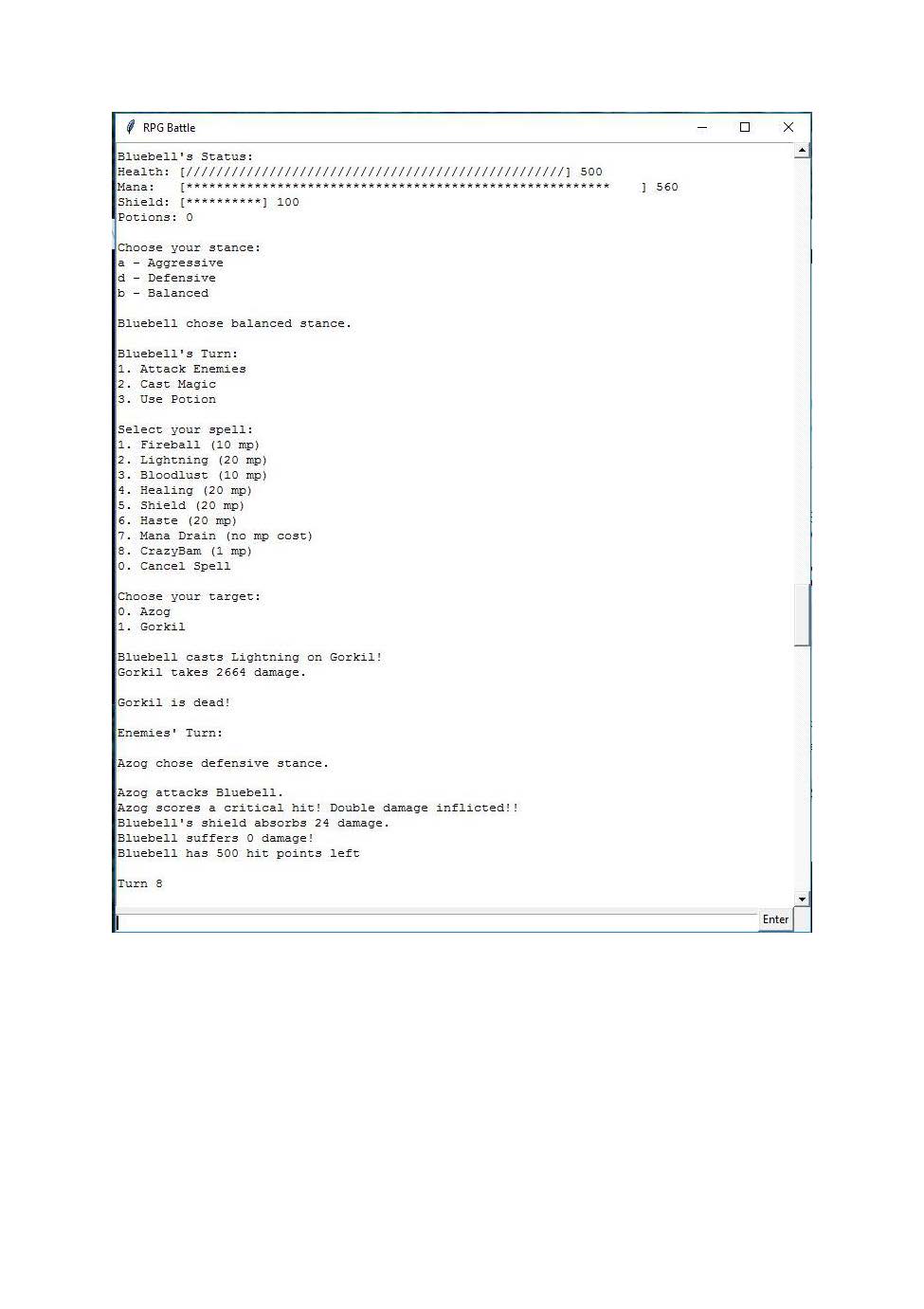 1
Annotation 1
1
Annotation 1
Modifies an object-oriented program by changing the difficulty parameters of the original game (attack magic spell successfully hits enemy for damage higher than that provided in the starter code) 2 Annotation 2
Demonstrates that the game satisfies a requirement (the enemy attack penetrates but is absorbed by the shield as required)
-
Annotations
-
1
Annotation 1
Modifies an object-oriented program by changing the difficulty parameters of the original game (attack magic spell successfully hits enemy for damage higher than that provided in the starter code) -
2
Annotation 2
Demonstrates that the game satisfies a requirement (the enemy attack penetrates but is absorbed by the shield as required)
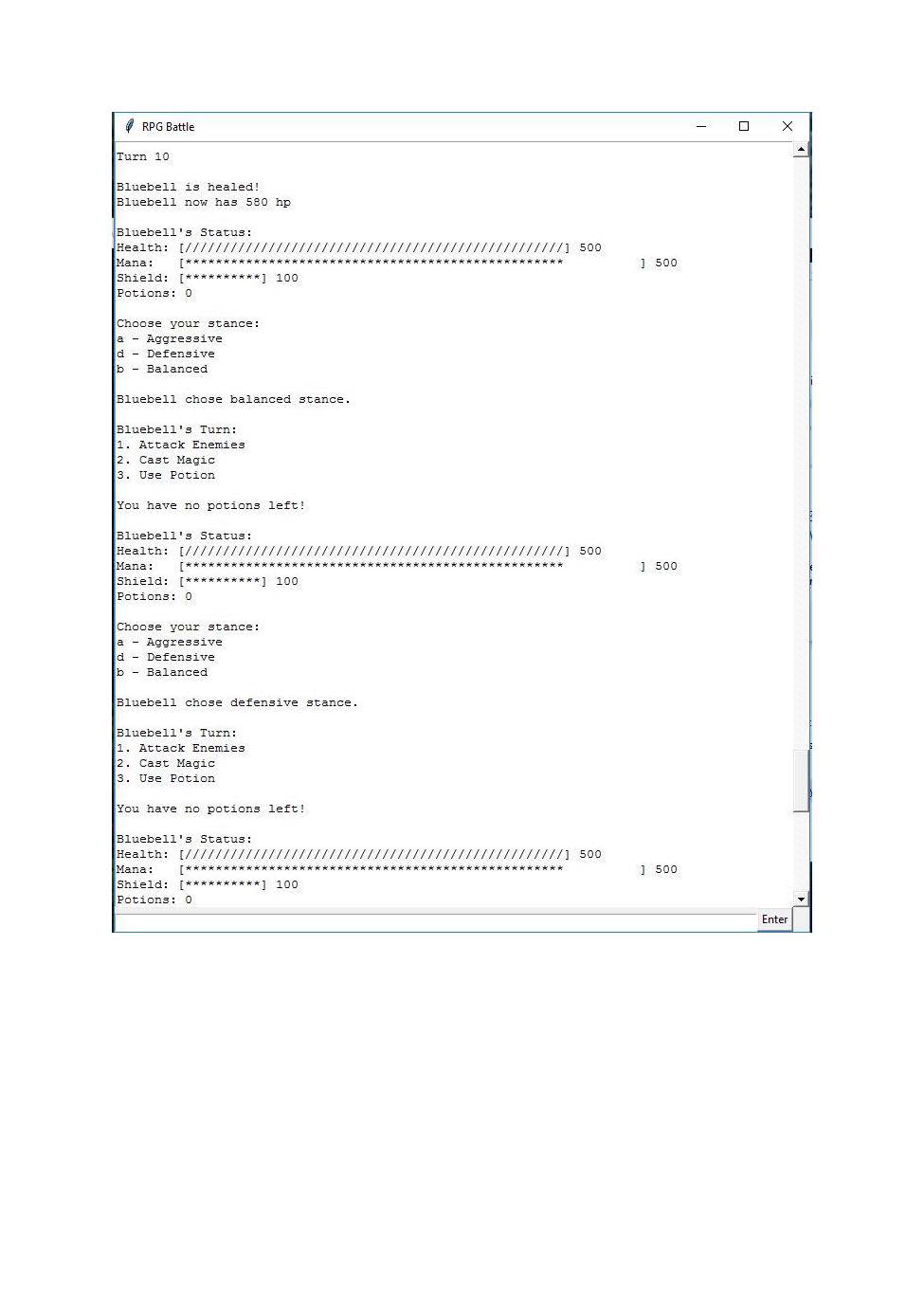
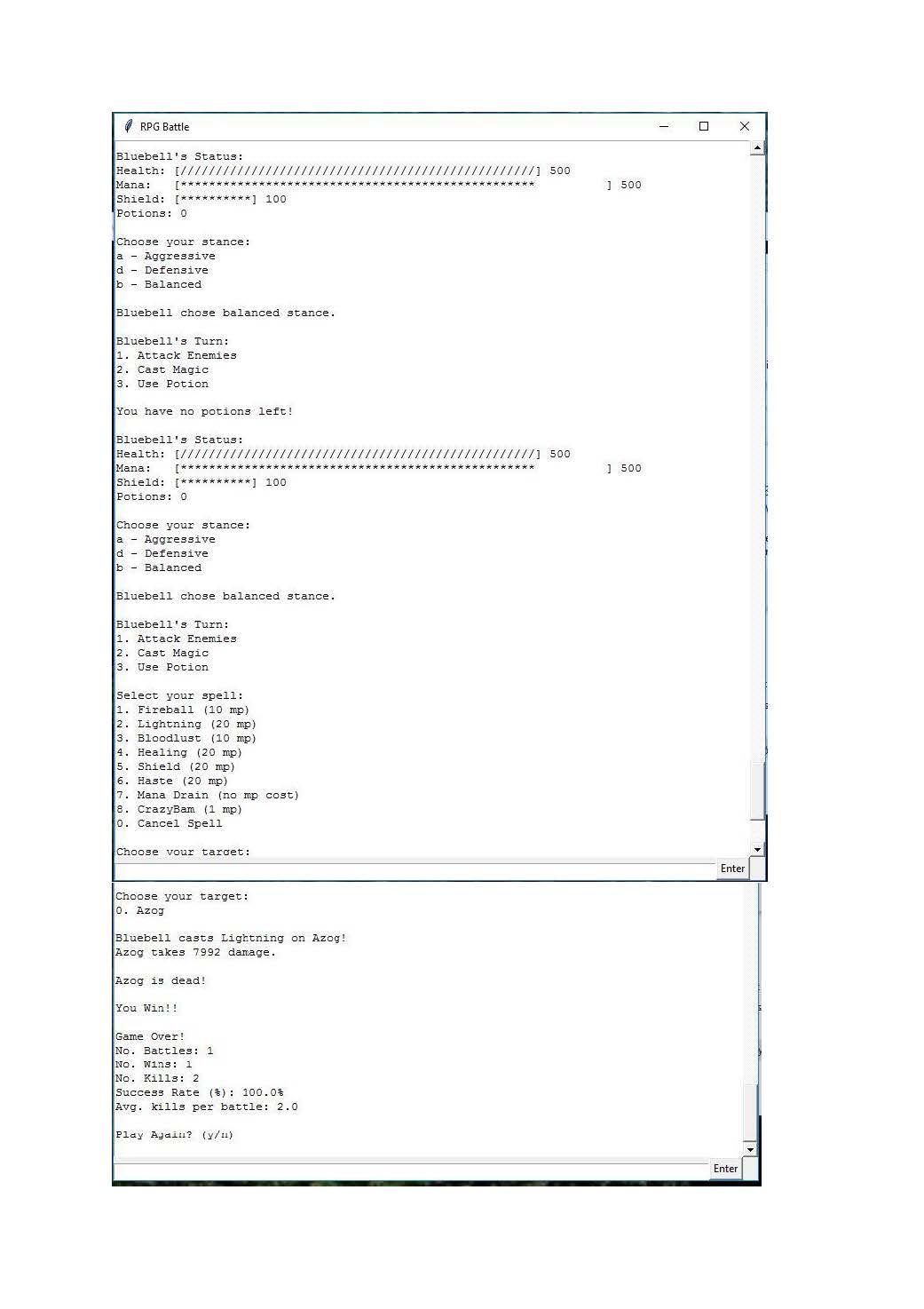 1
Annotation 1
1
Annotation 1
Designs a conclusion to the game (game ends when both enemies are dead and correct statistics are displayed)
-
Annotations
-
1
Annotation 1
Designs a conclusion to the game (game ends when both enemies are dead and correct statistics are displayed)

